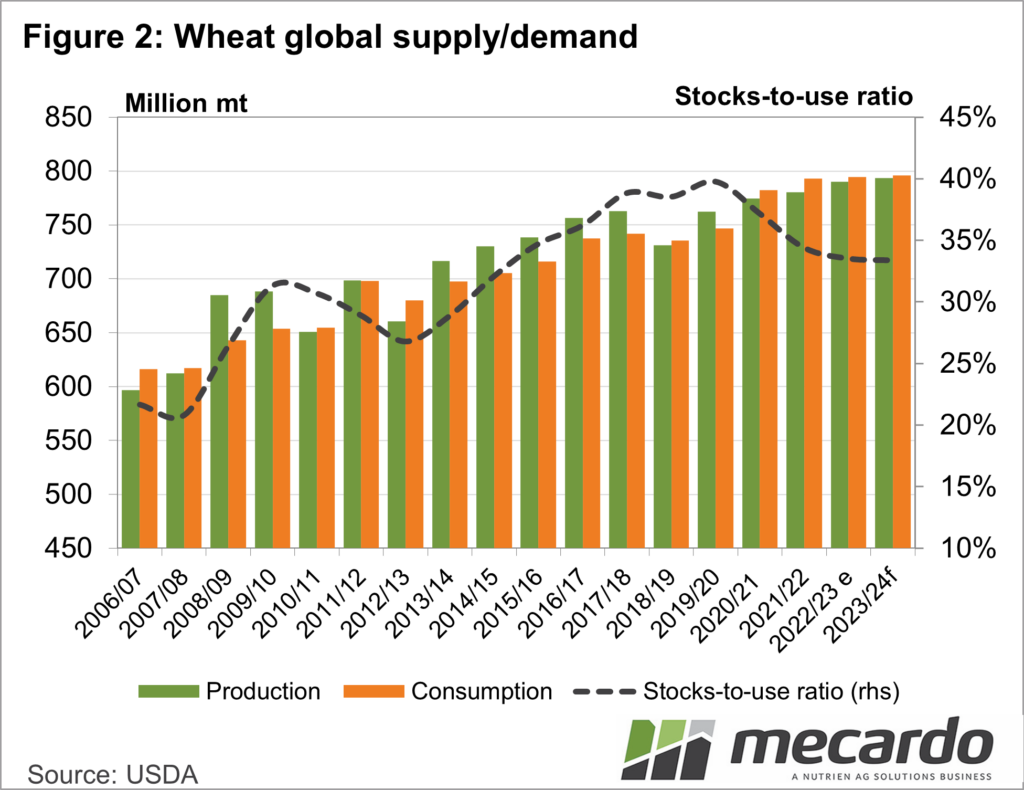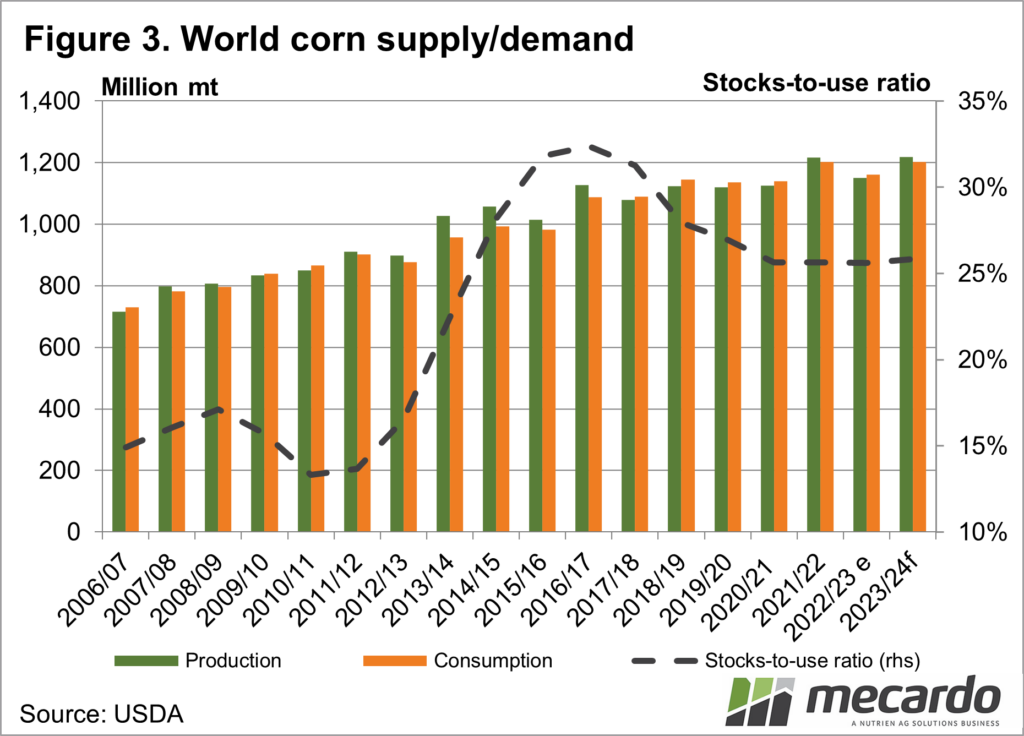The August World Agricultural Supply and Demand Estimates (WASDE) report is one of the most anticipated for the year. In August, the United States Department of Agriculture (USDA) has its first real estimates of corn and soybean yields based on grower surveys. This year the surveys didn’t shift estimates much, and markets showed little reaction.
With 85% of winter wheat harvested in the US as of last weekend, the market is getting a good handle on how wheat supplies are tracking in the US. For corn and soybeans, however, crops are in critical phases of development. As such, markets watch the August WASDE closely for indications of increasing or decreasing production expectations.
Figure 1 shows that on a global scale, movements in supply and demand estimates were relatively benign. While world production was down marginally for wheat, course grains and oilseed, consumption was also adjusted. This left ending stocks down slightly.
The story for US corn and soybeans was similar. US oilseed production, which is largely soybeans, was cut by 3mmt, but the market was expecting this. US corn production was also reduced marginally, down 1.3%, but again this was expected, and still well up on last year.
The reduction in US supplies of corn was the major mover for world-course grain production. Russian corn is also expected to be down slightly, but Ukraine was forecast 2mmt higher. For soybeans, there was little change outside of the US.
In wheat, there were a few more movements. While US production was steady, Ukraine’s production was increased by 3.5mmt, and Canada’s down by 2mmt. Interestingly Australia’s wheat production is still pegged at 29mmt by the USDA. It will have to adjust lower to meet local estimates.
Figure 2 shows wheat consumption is expected to outstrip production for the fourth year in a row, but only just with minimal impact on the stocks-to-use ratio.
For corn, world production is forecast to be marginally higher than consumption, seeing a slight uptick in stock to use.
What does it mean?
With the USDA forecasts relatively close to pre-report expectations there was little impetus for markets to move after the WASDE. Supply and demand equations remain tight for all major commodities, however, and any weather or geopolitical issues have the potential to move markets in a hurry, mostly on the upside.
Have any questions or comments?
Key Points
- The August WASDE is highly anticipated as it gives the first solid numbers on corn and soybeans.
- The year the WASDE came in close to pre-report estimates.
- Market movements were relatively benign, but supply/demand equations remain tight.
Click on figure to expand
Click on figure to expand
Click on figure to expand
Data sources: USDA, Mecardo




